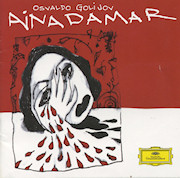 The fascist militia of Grenada, Spain, abducted one of Europe’s great literary voices, Frederico Garcia Lorca, and then murdered him on August 19, 1936. The corpse of this landmark poet-playwright-director-composer-artist was dumped in an unmarked and still unknown grave. Lorca was only 38 when his life was stolen, and all that he would have created was stolen from posterity.
The fascist militia of Grenada, Spain, abducted one of Europe’s great literary voices, Frederico Garcia Lorca, and then murdered him on August 19, 1936. The corpse of this landmark poet-playwright-director-composer-artist was dumped in an unmarked and still unknown grave. Lorca was only 38 when his life was stolen, and all that he would have created was stolen from posterity.
Murdering Lorca was an early act in the Spanish Civil War of 1936-38, which was itself a dry run for World War II. Lorca’s fate announced a campaign of targeted mass murders that helped pave the way for General Francisco Franco’s dictatorship, a regime that lasted until the General’s death in 1975.
Oswaldo Golijov’s first opera bears the title of a location where many think the fascist militia “disappeared” Lorca, to use modern parlance: That location is a public fountain bearing the Arabic name Ainadamar, meaning “fountain of tears.” Indeed.
The artistry of Ainadamar, which premiered at Tanglewood in 2003, and was then revisd for the 2005 Sante Fe Festival, does full honour to Lorca’s life and work. It’s a partnership between a very hot and unorthodox composer with two frequent collaborators, the librettist David Henry Hwang and the New Music diva Dawn Upshaw, plus Peter Sellars as the stage director. Sellars, from my perspective, is beyond brilliant when he directs contemporary operas. He’s an invaluable ally to a composer as an opera travels from an initial gleam in the eye to its premiere. (When Sellars gets his hands on Mozart however, oy.)
My original intention for this month’s column had been to tackle Puccini’s penultimate opera, La Rondine, via a review of the recent Met production plus a better than fine Hardy DVD which remasters a 1959 Italian television production. But on the way back from viewing Obama’s inauguration from a comfortable perch in the Canadian embassy, I managed to slip Deutsche Grammophon’s recording of Ainadamar into the appropriate slot in my car’s radio despite the best efforts of DG’s packaging people to make shrink wrapping impenetrable. Having reviewed earlier Golijov recordings, I had high expectations. But this one bowled me over, as was evidently the case for the powers that be at the Metropolitan Opera, which has given a prized commission to Golijov to create a new opera for the 2011 season.
Golijov was born and raised in Buenos Aires’ large Jewish community. Anyone born in Argentina has a very direct knowledge of government and para-military thugs “disappearing” people. Lorca’s plays were kept alive in Latin America while Franco banned them in his native Spain. (In fact the central female character in Ainadamar is an aging actress in Uruguay – Margarita Xirgu, the actress who unsuccessfully tried to get Lorca to get to safety by joining her in a tour to Cuba.) Add in the experience of Golijov’s Eastern European Jewish parents in getting out of Europe in time to avoid the concentration camps, and it’s evident that creating this opera is far more than a good gig. This scenario is very, very personal.
The musical means that Golijov has in hand to create this scenario are unusually, perhaps uniquely, diverse – and deep. After completing his formal undergraduate training in Argentina, Golijov headed to the rigorous conservatory in Jerusalem. In Israel, Golijov picked up on the music of both Arabs and contemporary Israelis. His earlier informal training included immersion in Jewish liturgical music, Tango as high art music, and Afro-Brazilian drumming. The multiple musical worlds that we hear in Golijov’s compositions are the result of living and working in diverse contexts, not pastiche to be plugged in here and there. Golijov doesn’t quote Afro-Brazilian drumming or synagogue chants – he composes with them.
All of these elements had previously been wielded (and welded) with seeming ease in La Pasión según San Marcos, Golijev’s massive choreographed oratorio that was one of four Passions commissioned by the International Bachakadamie Stuttgart in celebration of both the new millennium and the 250th anniversary of Bach’s death. Sofia Gubaidulina, Tan Dun, and Wolfgang Rim were the other three invitees. This was heady company indeed for a young composer barely known a decade earlier.
La Pasión is an applied case of chaos theory, sparked by Golijov’s youthful experiences in synagogues. Traditional prayers often call for each person to chant to their own drummer. It seems to be a welter of confusion, but then the key prayers come. Everybody shifts gears on the spot and participates in tight coordination. It’s like the Count Basie Band’s legendary ability to turn on a dime. Golijov noticed the same pattern in Catholic street parades.
None of the above is chaotic in the slightest. It’s the product of practising for many years and knowing the signals and the repertoire. But it does build up dramatic tension and release.
Dramatic tension and release is the name of of the game in opera. When I first heard La Pasión, my immediate read was that this composer ought to be writing operas. Golijov’s change of course in that direction was thankfully not long in coming.
In contrast to La Pasión, Ainadamar employs smaller forces and is all the more powerful for doing so. The scenario shifts back and forth from the present of a dying actress to slices of the past. The sounds of Muslim Spain are rekindled long after they’ve disappeared. Brazilian drumming ups the emotional pitch when the time is right.
Just imagine what will occur when Golijov is let loose with the vast resources of the Met.



